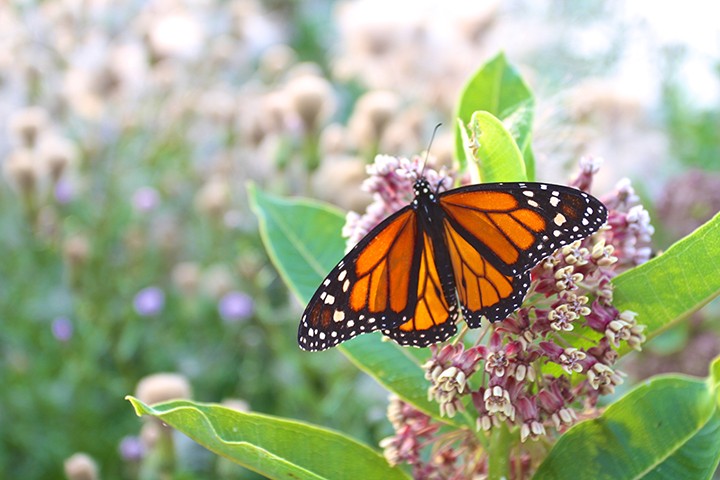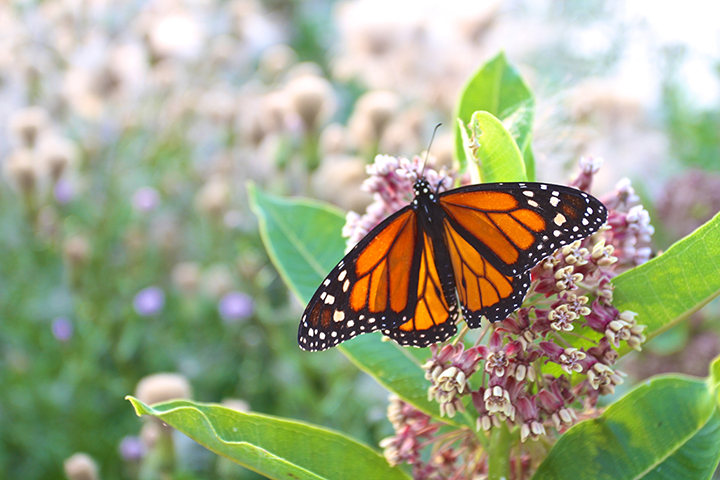
By Anna Skinner
After reading a story in Current about the dwindling population of butterflies, Joyce Young, of Westfield, wanted to convince others to create their own butterfly garden. She created hers two years ago and has been lucky enough to see her own butterflies flitting around the garden.
“My garden is pretty small, only about 40 square feet,” she said. “The point is that anyone can do it, and it’s relatively easy.”
Young said if someone visits monarchwatch.org, the website will educate the user about everything they need to know to build a butterfly garden. Most of all, the garden needs milkweed, also known as butterfly weed.

“With the monarchs migrating north, if they don’t have food sources, they don’t have sources to lay eggs and there is no next generation of monarchs so they end,” Young said. “That’s why it’s critical. If they can’t live long enough to make it to Canada, eventually there will be no more butterflies.”
Young said most butterfly gardens are small and don’t take long to build. Hers only took one day.
“It’s just a matter of going out to a garden center and buying all the plants,” Young said. Most garden centers sell milkweed under the name of butterfly weed. It’s a perennial, so it should return back every year.
“I’ve been fortunate, last year I saw my first butterfly. These are not monarchs I have set free, I have not done that, but last summer one came by and stayed in my garden,” Young said. “I thought it was really cool that I accomplished what I set out to do. You can report sightings of monarchs, they are definitely around, it’s just giving them the type of flowers that they need to come and stay for a while.”



